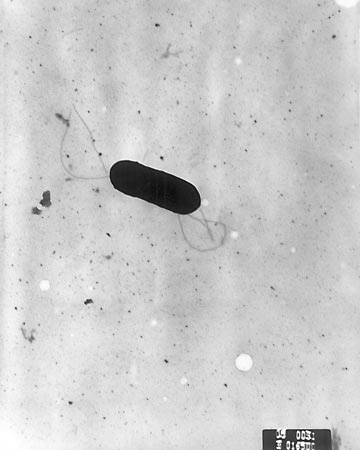listeriosis
pathology
 disease caused by the bacterium Listeria monocytogenes. The bacterium has been isolated from humans and from more than 50 species of wild and domestic animals, including mammals, birds, fish, crustaceans, and ticks. It has also been isolated from environmental sources such as animal silage, soil, plants, sewage, and stream water.
disease caused by the bacterium Listeria monocytogenes. The bacterium has been isolated from humans and from more than 50 species of wild and domestic animals, including mammals, birds, fish, crustaceans, and ticks. It has also been isolated from environmental sources such as animal silage, soil, plants, sewage, and stream water.Evidence suggests that most humans with listeriosis may be infected by soil-contaminated food (e.g., unpasteurized milk). The disease normally develops in persons whose immune systems are weak or impaired, such as newborn infants, pregnant women, the elderly, and those whose immune systems have been compromised by an underlying disease or by immunosuppressive drugs. The disease may appear as a mild influenza-like illness and go unrecognized. In adults meningitis is the most commonly recognized clinical manifestation of listeriosis; the bacterium can also cause endocarditis (inflammation of the heart lining), septicemia (blood poisoning), and skin lesions. Intrauterine infection of the fetus may result in miscarriage, premature birth, or stillbirth; if the infant is born alive, it may develop septicemia or meningitis. Listeriosis responds to treatment with antibiotics.
Sheep, cattle, goats, horses, pigs, and other domesticated animals are susceptible to the infection, which may result in encephalitis, septicemia, and spontaneous abortion. In animals listeriosis is also known as circling disease, because some infected animals walk in circles.
- Elskamp, Max
- Elsschot, Willem
- Elssler, Fanny
- Elsterian Glacial Stage
- El Teniente
- El Tigre
- Eltinge, Julian
- Elton, Charles
- Elton, Lake
- Elton Mayo
- Eluru
- Elvin Charles Stakman
- Elvin Hayes
- Elvin Jones
- Elvin M Jellinek
- Elvira, Council of
- Elvis Costello
- Elvis Presley
- Elvstrøm, Paul
- Elway, John
- Elwood
- Elwood Haynes
- Ely
- Ely Culbertson
- Ely, Isle of